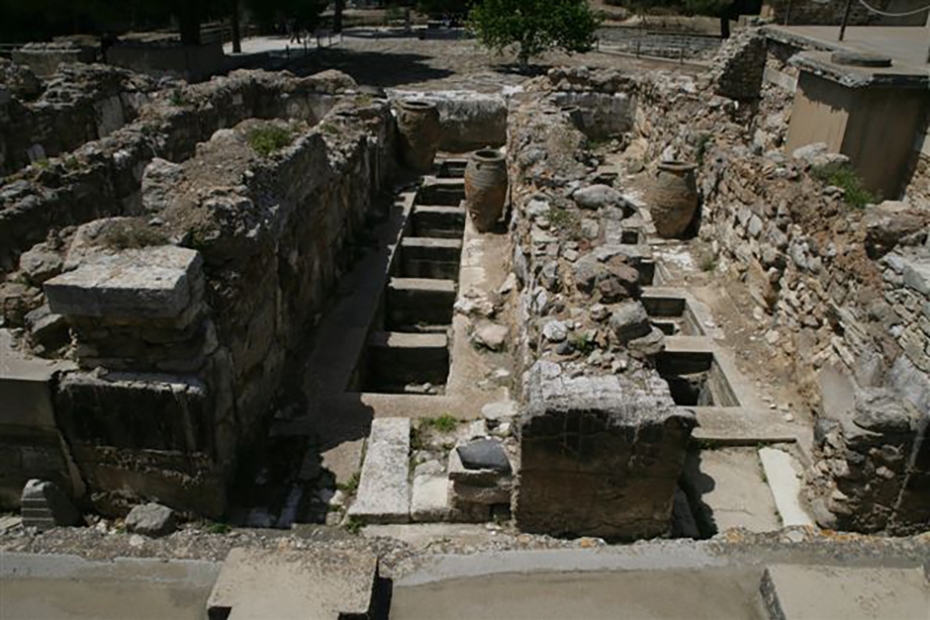The silver-green foliage of the olive tree has graced the mountains and shores of Greece from as far back as 60,000 years ago. Archaeological evidence attests to the long and continuous presence of the olive tree on Greek soil. Leaves of the oldest known cultivated trees, dating back 55,000 years, have been unearthed on the islands of Santorini and Nyssiros. On Crete, the world’s earliest olive press, a simple stone basin with a spout in which olives were crushed with a large rock, was excavated at the Minoan site of Vathipetro.
The Minoans, seafaring traders and avid farmers, organized the first full-scale cultivation of the olive tree. They stored their oil and wine in huge earthenware amphorae, many of which have been found in the magnificent Minoan palace at Knossos, and at other Minoan sites in Crete. Near the ancient amphorae archaeologists also found mysteriously inscribed clay tablets. It wasn’t until 1952 that these tablets were finally deciphered: a treasure of information pertaining to the palace groves, to the quantities of oil produced and handled, to the reverence of the Minoans, who sent olive oil as offerings to the gods, and to the amounts of oiled rewarded to the working classes in the palace as remuneration for their labor.
On these tablets, written in linear B, the depiction of the olive tree and all that is relevant to it is masterful. A solid ideogram, for example, represents the tree; a more delicate ideogram represents the small, elegant olive flower; a wavy line is meant to show oil pouring forth from an amphora. In their syllabic form, the words are no less remarkable for they have traveled unaltered from prehistoric times to the present: e-ra-wa, pronounced e-lai-a, is still the Greek word for olive tree, and e-ra-wo, pronounced e-lai-o, is to this day what the Greeks call olive oil.
The Minoan civilization mysteriously disappeared, perhaps after an enormous volcanic eruption on Santorini, which as legend has it was the lost Atlantis. In its wake, the Mycenaeans, a warrior race, rose to power. It is their great deeds that have been immortalized in the epic poems of Homer. In the Iliad and the Odyssey, Homer mentions the olive and the olive tree 45 times. The Odyssey teaches us to distinguish between wild and cultivated trees. We read about Odysseus (Ulysses) who hides in an olive grove and who was encouraged by the goddess Athens under an olive tree. Even his marital bed is made of olive wood.






